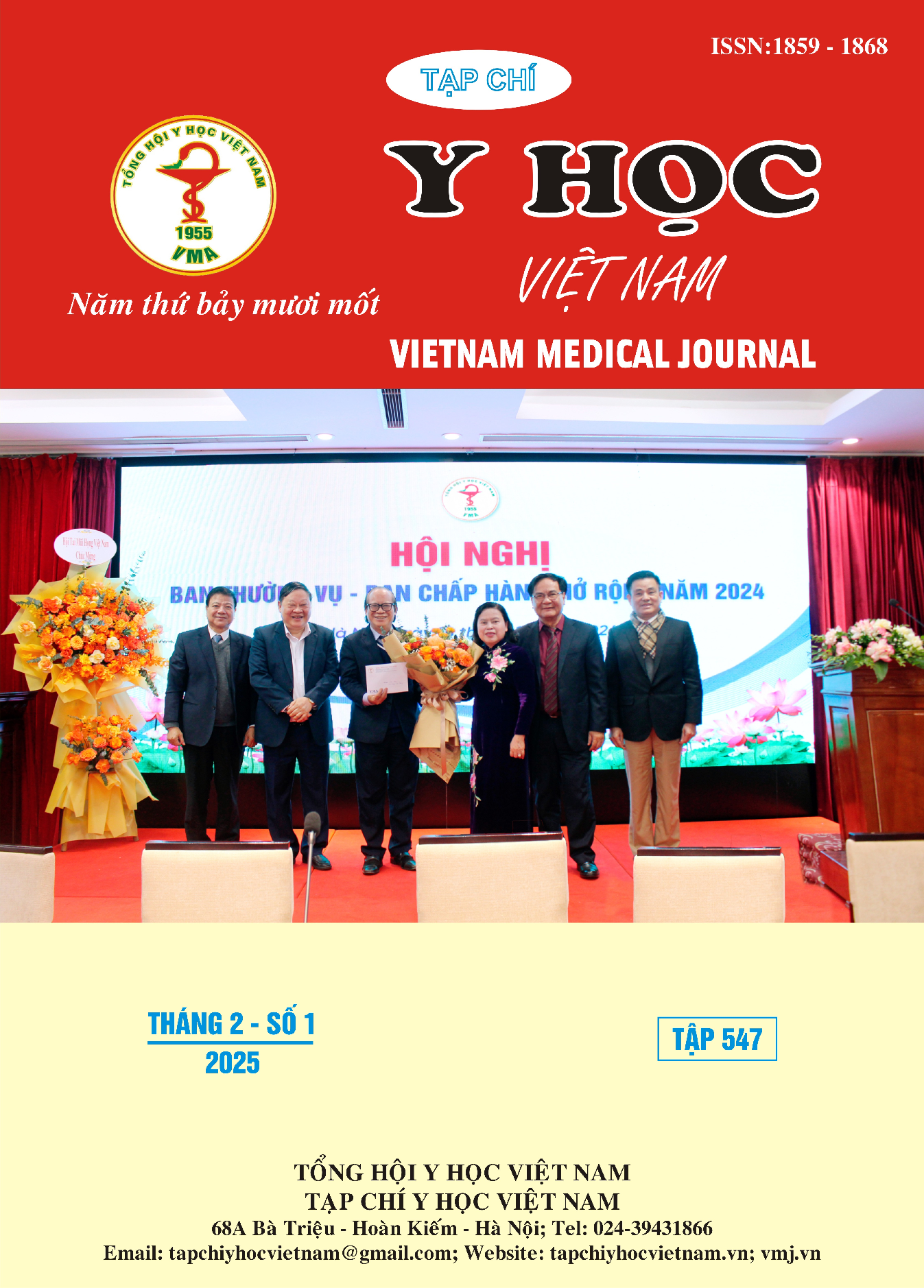EVALUATION OF THE RESULTS OF COMPLETE ENDOSCOPIC SURGERY FOR COLORECTAL CANCER TREATMENT NATURAL PATHOGENS AT BACH MAI HOSPITAL
Main Article Content
Abstract
Results: A retrospective study was conducted on 30 colorectal cancer patients who underwent complete laparoscopic resection of the colon and rectum and collected specimens through the natural route at Bach Mai Hospital from January 2021 to December 2023. Results: Average age 63.5 (39-77), male/female ratio 1/2, average BMI 21.6. Tumor location was mainly in the sigmoid colon 19 patients and rectum 7 patients. Samples were collected through the vagina 14 patients (46.7%), rectum 16 patients (53.4%). The anastomosis was mainly lateral-peritoneal, accounting for 70%. Average tumor size: 24 ± 10mm (6-45mm). Average surgical time 150 ± 30 minutes (90-210 minutes). 100% of patients had complete laparoscopic surgery. Postoperative complications:1patient had postoperative anastomotic leakage and surgical site infection, postoperative fever in 3 patients (10%). The number of days in hospital after surgery was 5.8 ± 1.3 days, there was no death within 30 days related to surgery. Conclusion: Complete laparoscopic surgery for colorectal cancer with natural biopsy is safe and feasible, and gives good early results. It reduces trauma to the patient, helps the patient to have less pain and recover sooner after surgery. However, the surgery time is longer. Therefore, NOSE surgery can completely replace traditional surgery when performed correctly.
Article Details
Keywords
Laparoscopic colorectal resection, natural specimen collection
References
2. ME Franklin, Jr., R Ramos, D Rosenthal, W Schuessler. Laparoscopic colonic procedures. World J Surg. 1993;17(1):51-56.
3. Đặng Công Thuận và CS. Nghiên cứu mối liên quan giữa nồng độ CEA và các đặc điểm lâm sàng, giải phẫu bệnh trong ung thư biểu mô đại trực tràng. Tạp chí Y Dược học - Trường Đại học Y Dược Huế. 2012;9:86-95.
4. WT-L Chen, S-C Chang, H-C Chiang, et al. Single-incision laparoscopic versus conventional laparoscopic right hemicolectomy: a comparison of short-term surgical results. Surgical endoscopy. 2011;25:1887-1892.
5. S Karagul, C Kayaalp, F Sumer, et al. Success rate of natural orifice specimen extraction after laparoscopic colorectal resections. Techniques in coloproctology. 2017;21:295-300.
6. X Guan, Z Liu, A Longo, et al. International consensus on natural orifice specimen extraction surgery (NOSES) for colorectal cancer. Gastroenterol Rep (Oxf). 2019;7(1):24-31.
7. M Franklin, S Liang, K Russek. Natural orifice specimen extraction in laparoscopic colorectal surgery: transanal and transvaginal approaches. Techniques in coloproctology. 2013;17:63-67.
8. Dương Xuân Lộc và CS. Nghiên cứu ứng dụng phẫu thuật nội soi cắt đại trực tràng lấy bệnh phẩm qua ngả hậu môn. Tạp chí Y Dược học - Trường Đại học Y Dược Huế 2014;21:94-98.
9. J Leroy, F Costantino, R Cahill, et al. Laparoscopic resection with transanal specimen extraction for sigmoid diverticulitis. Journal of British Surgery. 2011;98(9):1327-1334.
10. S Wang, J Tang, W Sun, H Yao, Z Li. The natural orifice specimen extraction surgery compared with conventional laparoscopy for colorectal cancer: a meta-analysis of efficacy and long-term oncological outcomes. International Journal of Surgery. 2022;97:106196


